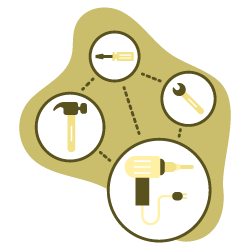This article is the second in a series looking at edge SEO, and how CDN and serverless technologies are evolving – developing new opportunities for SEO professionals to improve client website performance on the edge.
Being able to implement and manage redirects is pretty much considered a basic modern website management, and a necessary function in being able to manage websites, migrations, and even collaborations with other marketing channels.
That being said, a lot of platforms (modern and legacy) don’t support redirect management for CMS users, meaning that what is considered a basic becomes a challenge.
This is where Edge SEO can come into effect. Whilst not a new concept, it’s the process of implementing SEO fixes via a CDN or edge server.
To do this through Cloudflare Workers you need to be able to write performant JavaScript, or utilise an edge SEO tool like Sloth or Spark that both make the technologies a lot more accessible.

[Caption: Tools like Sloth and Spark make edge SEO activities more accessible to those who can’t write performant JavaScript]
At the time of writing this article, the most accessible method of implementing Edge SEO is through Cloudflare Workers, however Akamai are set to launch their own Akamai EdgeWorkers this year.
Implementing Redirects on The Edge
When researching the possibilities of using Cloudflare Workers for SEO, we were originally doing this as a solution to technical problems and limitations we were otherwise unable to overcome, as a back-up plan.
That being said, in some instances moving redirection response codes from the origin server to the “edge” can improve response times and reduce server demand by offloading requests.
This is useful if you typically have a poor TTFB (time to first byte), or a poor server in general. For site-wide redirects such as HTTP to HTTPS, removing the load from the server can be beneficial in the long term.
Implementing Redirects with Other CDNs
Looking at redirects specifically, some CDNs offer redirects through their control panel, albeit in limited capacity or functionality.
Even if you’re not on Cloudflare, you can implement redirects through other CDNs and platforms. Some of the more common methods I have listed below.
AWS Cloudfront
You can implement redirects through Lambda@Edge by modifying the response.
Fastly
You can generate redirects on Fastly through either a custom VCL or through the Fastly dashboard.
Akamai
Even though we’re a while off having Akamai EdgeWorkers, you can still implement through the Akamai user interface and the Edge Redirector Cloudlet.
Apigee
Apigee is a cross-cloud API management platform, not a CDN. You can use Apigee Edge to implement redirects through the AssignMessage policy.
This is a more manual process that the methods linked to in the CDN options in this list, as within the AssignMessage policy you need to set the location header, your redirect status code (301 or 302), and set your CORS header.
Cloudflare
Redirects can be implemented as Page Rules through the Cloudflare dashboard, or through deploying Cloudflare Workers.
As well as using tools like Sloth and Spark, you can also integrate other third-party web traffic managers with Workers, such as redirection.io.
Imperva/Incapsula
And finally, you can manage redirects through the Imperva/Incapsula user interface.
In summary
CDNs and serverless technologies are continuing to evolve and create new optimisation opportunities, in addition to the standard benefits that a CDN brings.
As users expect more seamless website interactions, the cost-effectiveness and benefits of edge technologies can yield great benefits to both online performance and organic search performance in the long-run.
Dan’s Taylor Edge SEO series
Part 1: Resolving SEO issues on legacy (and modern) platforms through edge SEO
Part 2: Creating & Managing Redirects on The Edge
Part 3: Integrating edge SEO into internal policies and workflows

